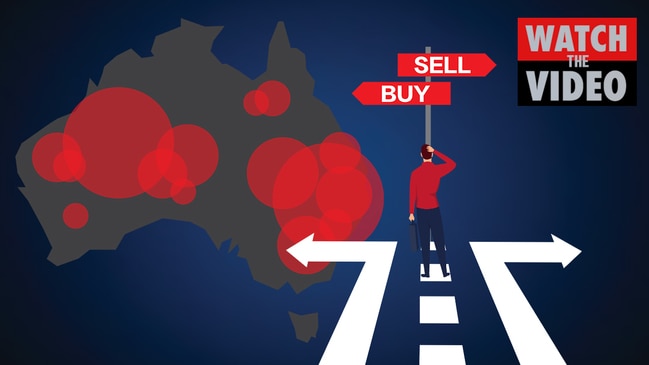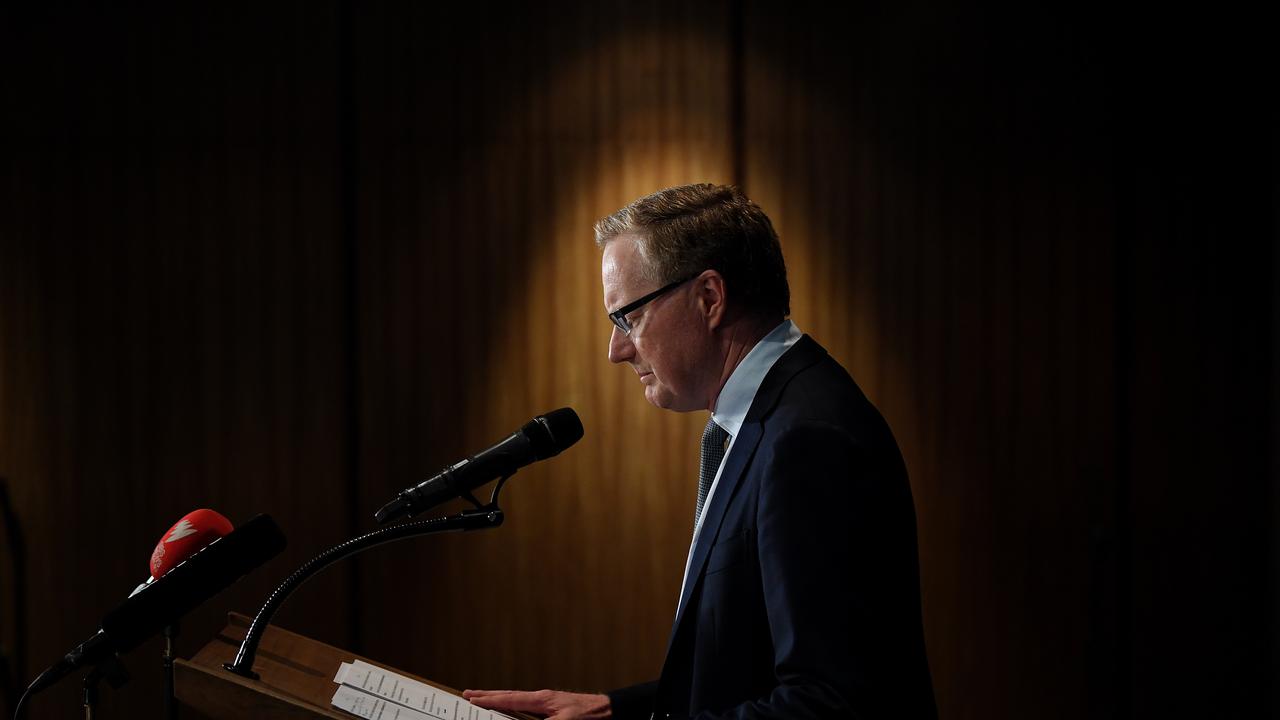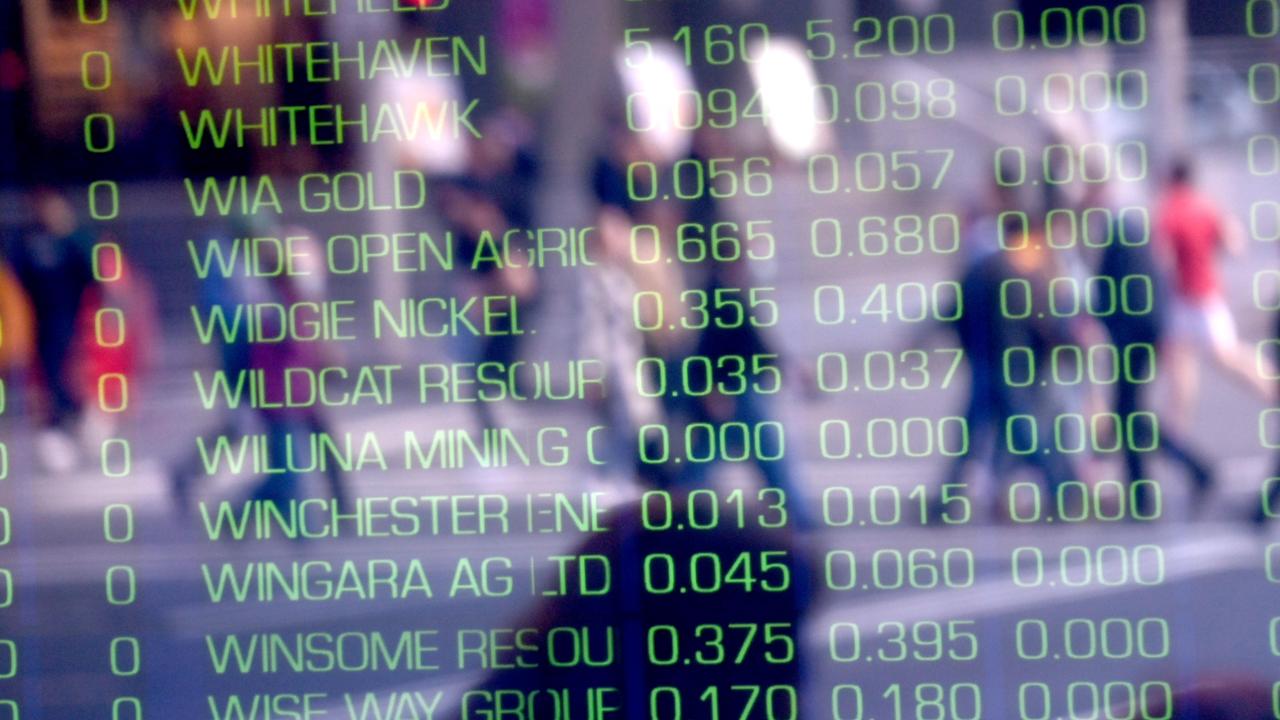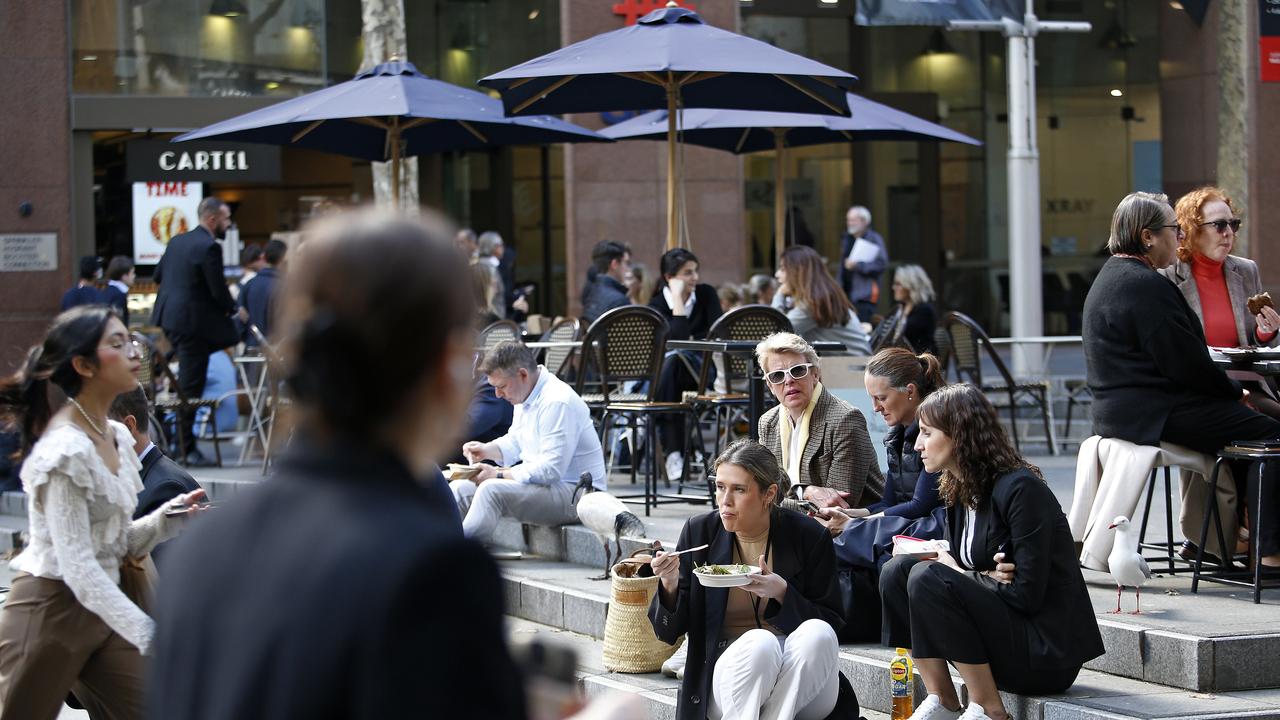RBA keeps interest rates steady as ‘bumpy’ economy gradually improves
The RBA has kept the official cash rate steady at an unprecedented low rate, leaving it with ammunition if the economic slump worsens.

The Reserve Bank of Australia has kept the official cash rate steady at the unprecedented low of 0.25 per cent, leaving it with the option of cutting further if the pandemic-induced recession worsens.
The central bank cut the cash rate, which is the interest rate on unsecured overnight loans between banks, at its regular meeting on March 3 as the crisis started to grip the nation.
It then held an extraordinary meeting just two weeks later when the board decided on a package that included a further reduction to 0.25 per cent and the introduction of the same target for the yield on three-year Australian government bonds.
Just a few hours before Treasurer Josh Frydenberg was set to hand down the Federal Budget on Tuesday, the RBA announced the cash rate would remain steady.
“The global economy is gradually recovering after a severe contraction due to the pandemic. However, the recovery is uneven and its continuation is dependent on containment of the virus,” governor Philip Lowe said.
“The national recovery is likely to be bumpy and uneven, and it will be some time before the level of output returns to its end 2019 level.
“Labour market conditions have improved somewhat over the past few months, and the unemployment rate is likely to peak at a lower rate than earlier expected.
“Even so, unemployment and underemployment are likely to remain high for an extended period. Wage and inflation pressures remain very subdued.”
Mr Lowe said ongoing fiscal and monetary support would be required for some time given the outlook for the economy and the labour market.
He said the bank’s policy package was working as expected and underpinning the supply of credit to households and businesses.
“There is a very high level of liquidity in the Australian financial system, and borrowing costs are at record lows,” he said.
Mr Lowe told a parliamentary committee in August: “It is highly likely that the cash rate will be at this level for some years, and having a target for three-year yields of 25 basis points reinforces this message.”

CreditorWatch chief economist Harley Dale said it was an appropriate decision.
“Tonight, it is the turn of the Federal Government to set out a clear agenda for recovery in what is the most important fiscal update in close to a century,” Mr Dale said.
“RBA governor Phillip Lowe has repeatedly called on state and territory governments to step up to the plate in terms of spending and investment to assist in generating the economic recovery Australia requires.
“In due course, the RBA will likely reduce the OCR to 0.10 per cent, but today wasn’t the day.”
If it had done so on Tuesday, the central bank would have been left “out of ammunition”, Mr Dale said.
Graham Cooke, insights manager at comparison website Finder, said the decision to hold fire suggested the RBA wanted to assess the budget in detail before making a decision about further moves.
The company’s latest RBA Cash Rate Survey of 40 experts and economists showed 15 per cent were predicting it to drop to 0.10 per cent on Tuesday, while 25 per cent expect it to happen in November.
Leanne Pilkington, managing director of real estate group Laing+Simmons, said banks had factored in another rate drop across various loan products in preparation for another cut.
The rate decision and Federal Budget predictions overshadowed a barrage of other economic data including August’s trade surplus, which plunged to $2.64 billion - from $4.65 billion in July - after imports rose and exports fell.
Meanwhile, the weekly ANZ-Roy Morgan consumer confidence rating lifted by 0.7 per cent to a 15-week high of 95.7.
Sentiment hit record depths of 65.3 on March 29, the lowest level since 1973.



